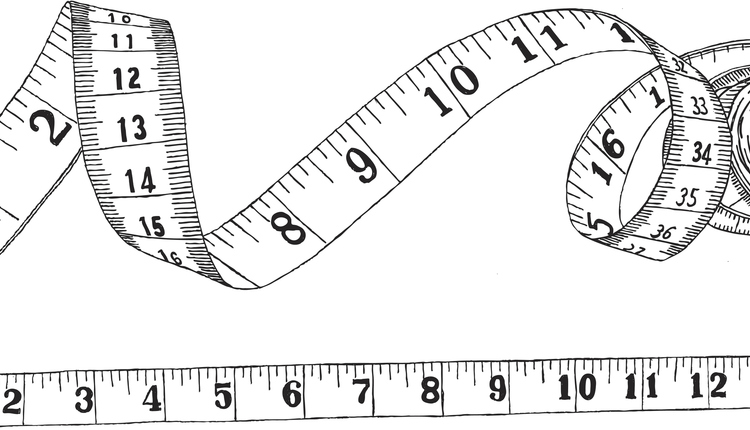This appeared in the November/December, 2018 issue of PARCEL.
If you ship small parcels with either of the national parcel carriers and you’ve been paying attention to the changes in their dimensional weight (DIM) pricing strategies, you probably have at least a working knowledge of how these changes impact your parcel spend. You hopefully understand the formula that the carriers use to calculate the DIM weight of your packages, and you most likely understand how the carriers use that weight to determine the appropriate billable weight.
You’re probably also painfully aware of how changes to the carriers’ DIM formula over the past few years have caused your shipping costs to rise dramatically. And you likely can recite from memory the carriers’ current DIM factor (or divisor), which they use as part of their DIM weight calculation for each service.
But how much do you know beyond that? Considering that the move to a 139 DIM divisor in 2017, coupled with the carriers’ standard general rate increase, amounted to what many experts believe to be the carriers’ largest ever single-year rate increase, it’s probably worth your time to become as educated as you can about the topic. The more you know, the more you can use that knowledge to make targeted requests for concessions from the carriers.
Before you can fully understand the carriers’ current DIM programs, it’s important to understand how they got to this point. As recently as 2006, the carriers used OS1, 2, and 3 designations for ground shipments and dimensional weight for express and international shipments.
In 2007, OS designations were phased out entirely in favor of DIM. With the changes, the landscape in 2007 looked like this:
UPS:
· Ground: Charged DIM using divisor of 194 on packages greater than 5,184 cubic inches.
· Domestic Air: Charged DIM using a divisor of 194 regardless of cubic size.
· International Air: Charged DIM using a divisor of 166 regardless of cubic size.
FedEx:
· Ground: Charged DIM using a divisor 194 on packages greater than 5,184 cubic inches
· Domestic Express: Charged DIM using a divisor of 194 regardless of cubic size
· International Express: Charged DIM using a divisor of 166 regardless of cubic size
Since then, the carriers have continued to modify their dimensional weight pricing structure by lowering the divisor and/or the cubic inch threshold until we arrived where we are today, which is that both UPS and FedEx packages use a 139 divisor, regardless of size.
A Look at the Impact of Billable Weight
So now that we know the history, let’s look at what dimensional weight really means and why the carriers use it to determine the billable weight of a package.
At the risk of sounding like your high school physics teacher, the dimensional weight of a package measures the theoretical weight of that package at a minimum density predetermined by the carriers. “Density” in the world of parcel shipping means “pounds per cubic foot.” To arrive at their minimum package density, the carriers apply a dimensional factor that is equal to a pre-determined number of cubic inches per pound. That cubic inch per pound number is equivalent to a certain number of pounds per cubic foot… or density. Confusing, I know, but hang in there.
In 2007, both carriers used a dimensional weight divisor (or factor) of 194 for certain types of shipments. That factor wasn’t pulled out of thin air. The carriers had determined, going into 2007, that the minimum package density that they were willing to carry was 8.9 lbs./ft3 (or 8.9 pounds per cubic foot.) The number of cubic inches per pound that equals 8.9 lbs./ft3 is 194.
See what they did there?
Similarly, the following holds true:
· 166 in3/lb. (cubic inches per pound) =10.4 lbs./ft3
· 139 in3/lb. = 12.4 lbs./ft3
So, in 2018, by using a DIM divisor of 139, the carriers are saying that the minimum package density they’re willing to carry is 12.4 lbs./ft3, or 12.4 pounds per cubic foot.
To better understand this, let’s look at an example of how the DIM divisor allows the carrier to achieve their minimum package density. As previously noted, both carriers are using a DIM divisor of 139 and, per our notes above, this means that they’re trying to achieve a minimum package density of 12.4 lbs./ft3.
Our hypothetical package measures 25”x25”x25” and weighs 12 pounds.
The actual density of the package is calculated as follows:
· 25x25x25/1,728 cubic inches = 9.04 cubic feet.
· 9.04 cubic feet is the volume of the package.
· 12 lbs. (actual weight)/9.04 cubic feet = 1.33 lbs./cubic foot.
· 1.33 lbs./ft3 is the actual density of our package. (Remember, they’ve said that 12.4 lbs./ft3 is the minimum package density that they’ll carry.)
The dimensional weight calculation (at 139) for that same package is as follows:
· 25x25x25/139 = 112.41 lbs. (This new weight represents the theoretical weight of the package at the carrier’s minimum package density.)
· This theoretical weight (112.41 lbs.) divided by the actual volume of the package (9.04 cubic feet as calculated above) gives the carrier their predetermined minimum package density of 12.4 lbs./ft3. (112.41/9.04 = 12.4 lbs. per cubic foot.) Voila!
While this is an extreme example due to the package size and the relatively low weight, for the carrier to achieve their minimum package density on a 12-pound package that measures 25x25x25, they need to bill it at the 113-pound rate!
Now that you hopefully know more about DIM than you did before reading this piece, how can you use this knowledge to your advantage when attempting to mitigate the impact of DIM on your parcel costs? Remember, knowledge is power! When discussing possible contract concessions with the carriers, make sure they know that you’ve done your homework. Let them know that you understand what they’re trying to accomplish via dimensional weight pricing and via the use of a certain divisor. Let them know that you understand the disconnect (if there is any) between the density of your packages and the minimum density that they’re trying to achieve. If you’ve done things from a package perspective to increase your package density, share that with them.
There is contractual relief to be had in this area. And showing the carriers that you’ve done your homework will go a long way toward putting you in a much better position when the time comes to negotiate your next pricing agreement. Good luck!
Dave Sullivan is the Director of Pricing and Analytics for Shipware, LLC, a San Diego-based parcel consulting firm. Dave has over 18 years of experience in logistics and transportation with a keen understanding for how the carriers structure margin-based parcel contracts. Dave also has extensive experience in LTL contract and rate structure, parcel network design, and contract negotiation. Dave has dedicated his career to assisting well-known companies dramatically reduce their shipping costs.
Click here to return to the auditing topic page.
Click here to return to the Packaging Solutions topic page.














